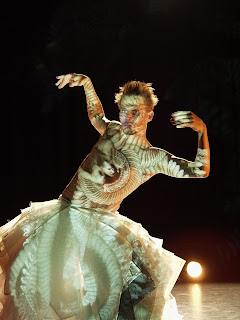Chair : Moonsun Choi
Panal : Hyunkyoung Cho, Youngsun Choi, Kyungho Lim
- Technologies of the electronic medium
- video and the computer are more closely connected media than film and video technologies.
- Philippe Marion, "Wehn a medium apperars, an intelligible media culture already exists. When a meduim comes into the world, it must also come to grips with preestablished codes (genres, institutions, other media, etc.)."
- video is the first audiovisual medium.
- Video's position in the media system
- Video's immediac and potential for processing generate a concept of the image that is different from other time-based media(photography, film)
- The status of the image changes in video
: electronically recorded, transferred to another divice, transmitted to a monitor.
- The flexible, unstable, incoherent, and nonfixed forms of the video image
: refered to as imagery.
- Video appears in modular presentations wherever the machines can be plugged together, so there is no systematic relationship between the placement of the apparatus and the medium's temporal-spatial model of addressing the viewer.
- Video's open-apparatus structure includes the multiple possibilities for the audiovisual exchange of electronic waveforms.
- Does difference matter?
- Video has entered a larger arena of media production and as a result is represented in many media applications, such as video-film, video installations, and video clips on Web sites
- once video was successfully established as a proper medium, it then converged into mixed-media forms.
- Because of its flexible, nonfixed, and unstable structure, video is an easy tool to adapt to all different kinds of media.
- it doesn't constitute a real medium, but rather the positon of an intermediary state, somewhere on the continuum between analogue and digital computers.
- Video was aethetically different from film and television and despite its poor image quality and limited applications, video was welcomed by experimental practitioners of performance, Happenings, and Fluxus events.
- the stated collapse of video into the digital is the seeming logic of the convergence of film and video under the new umbrella.
- there is a need to re-exanine the development of video as a meduim and its incorporation into digital form, while making some comparisons with film and, in turn, its simulation within the digital domain.
- Contemporary "video installations" are less concerned with video than with other media forms.
- in ther context of new media the older meduim of video has become a means and a technique in the service of interactive installations in which video sequences are iplemented to expand and enrich the "new" medium.
- When we discuss such elements of interactive and multimedia installations, we don't recognize video per se.
- The electronic medium
- video as a meduim is by its nature inclined to processing, while the digitally encoded image that results from programming can theoretically generate all possible image forms.
- In a comparative examination of media forms, the predisposition of the electronic to processing and the interchangeability of its audio and video streams toghther characterize the technical conditions that ground the realization of the aesthetic forms specific to video.

